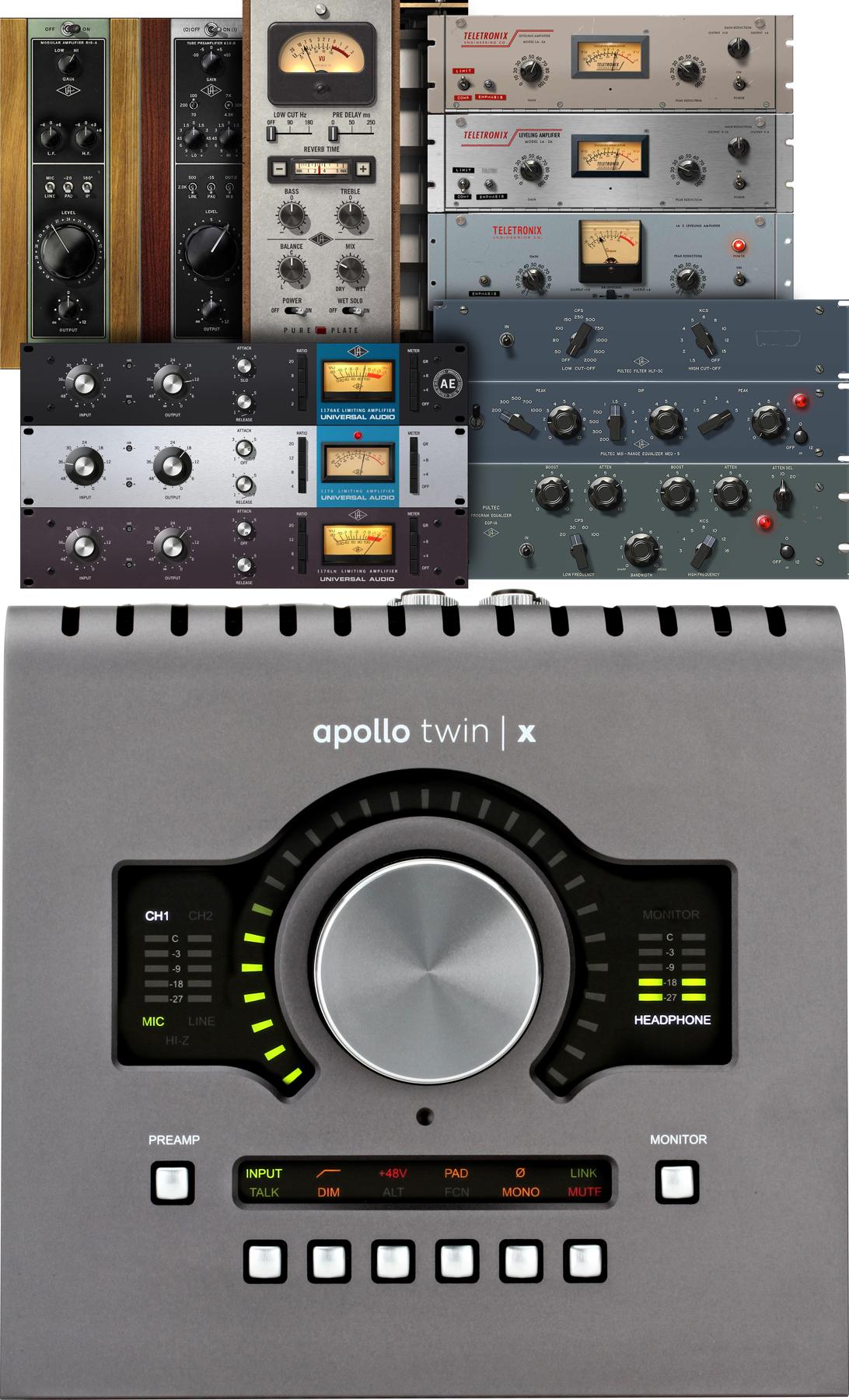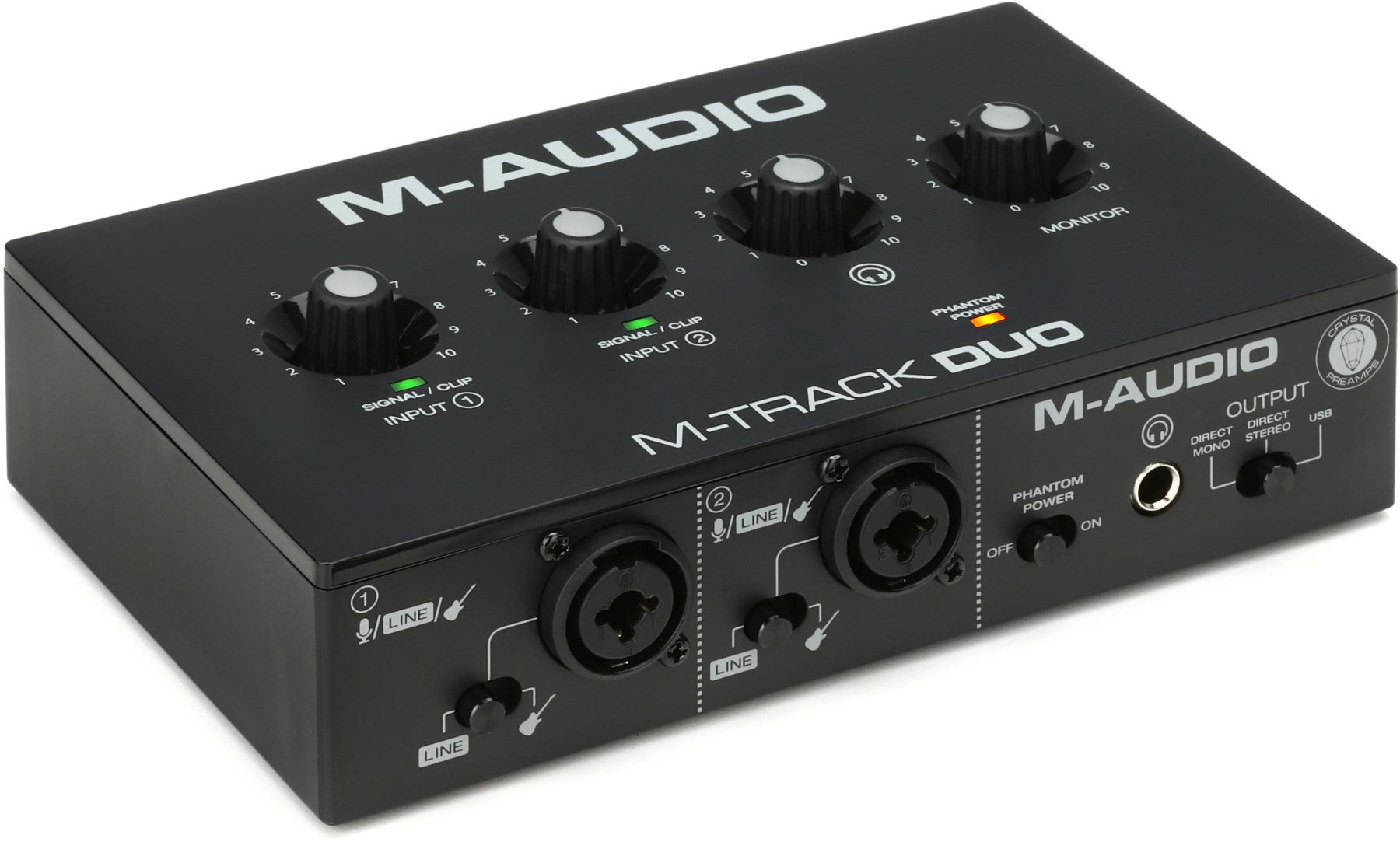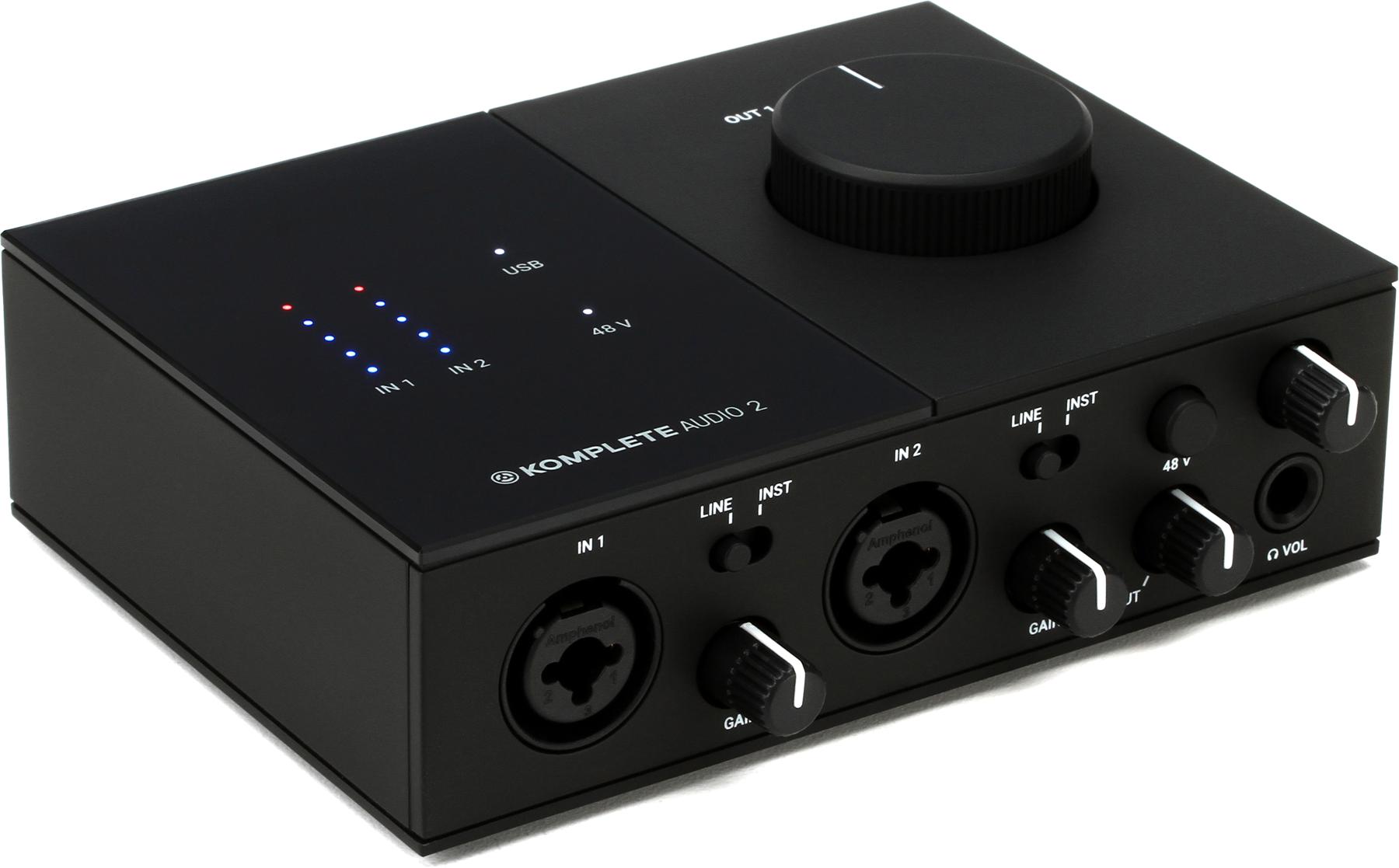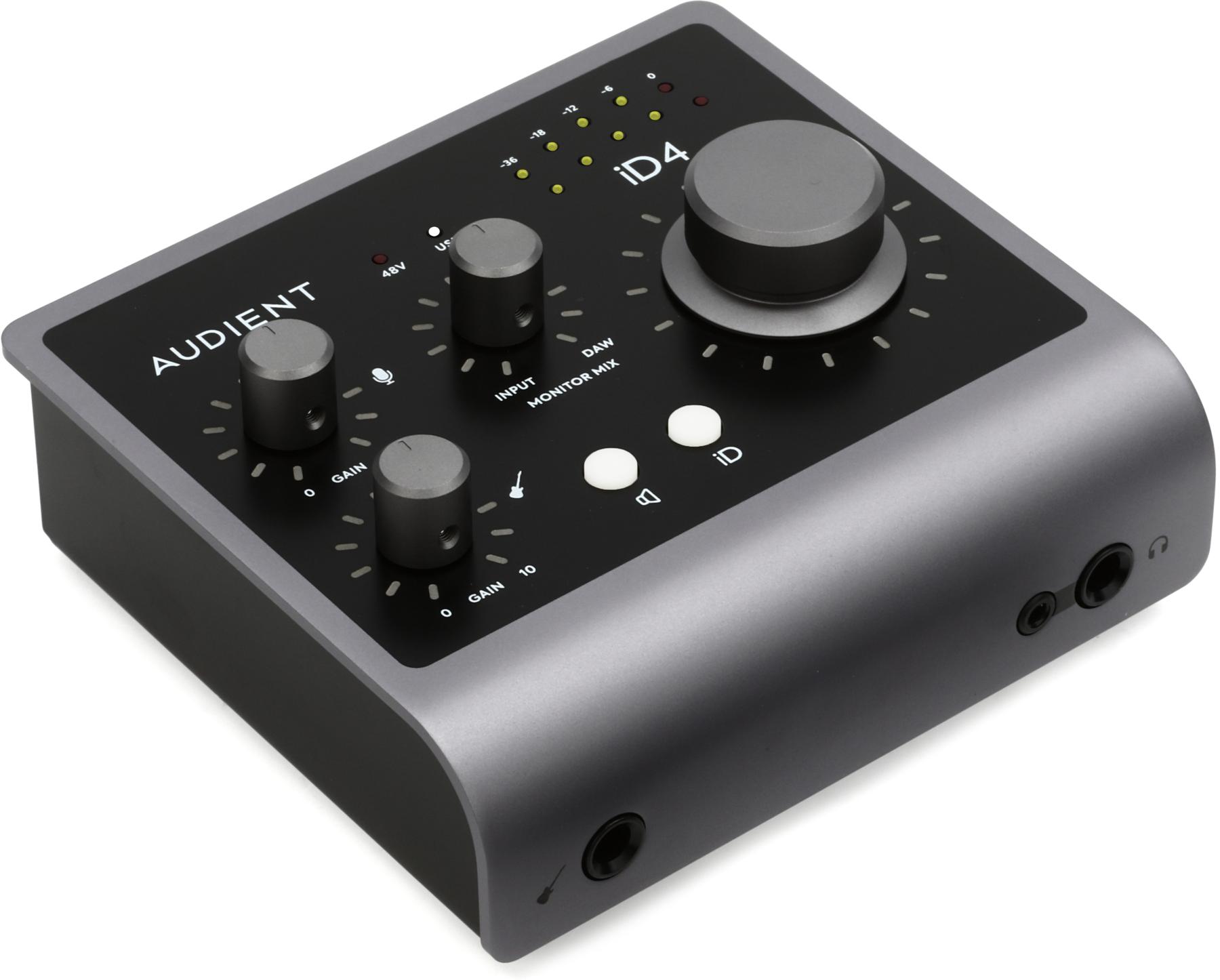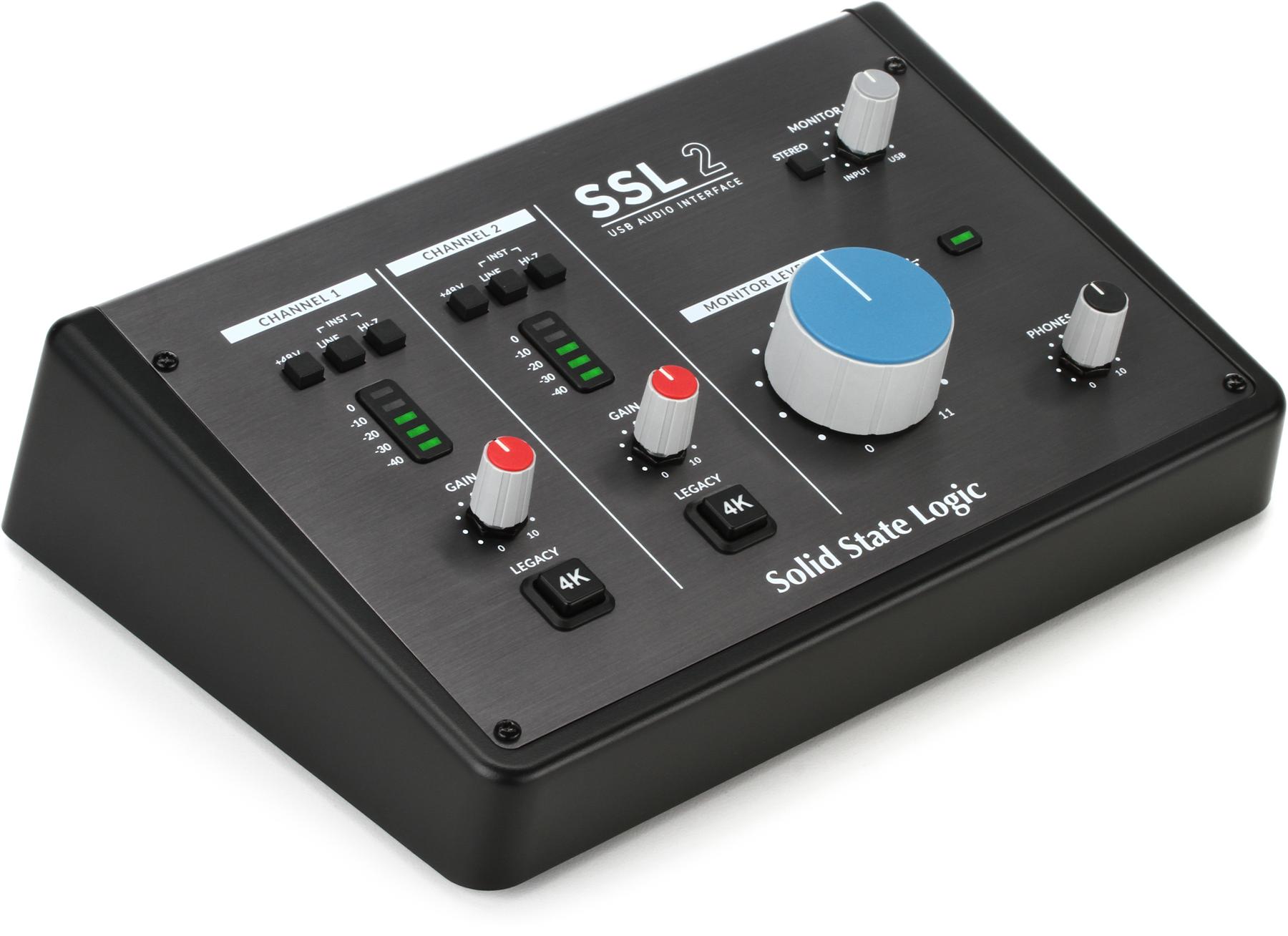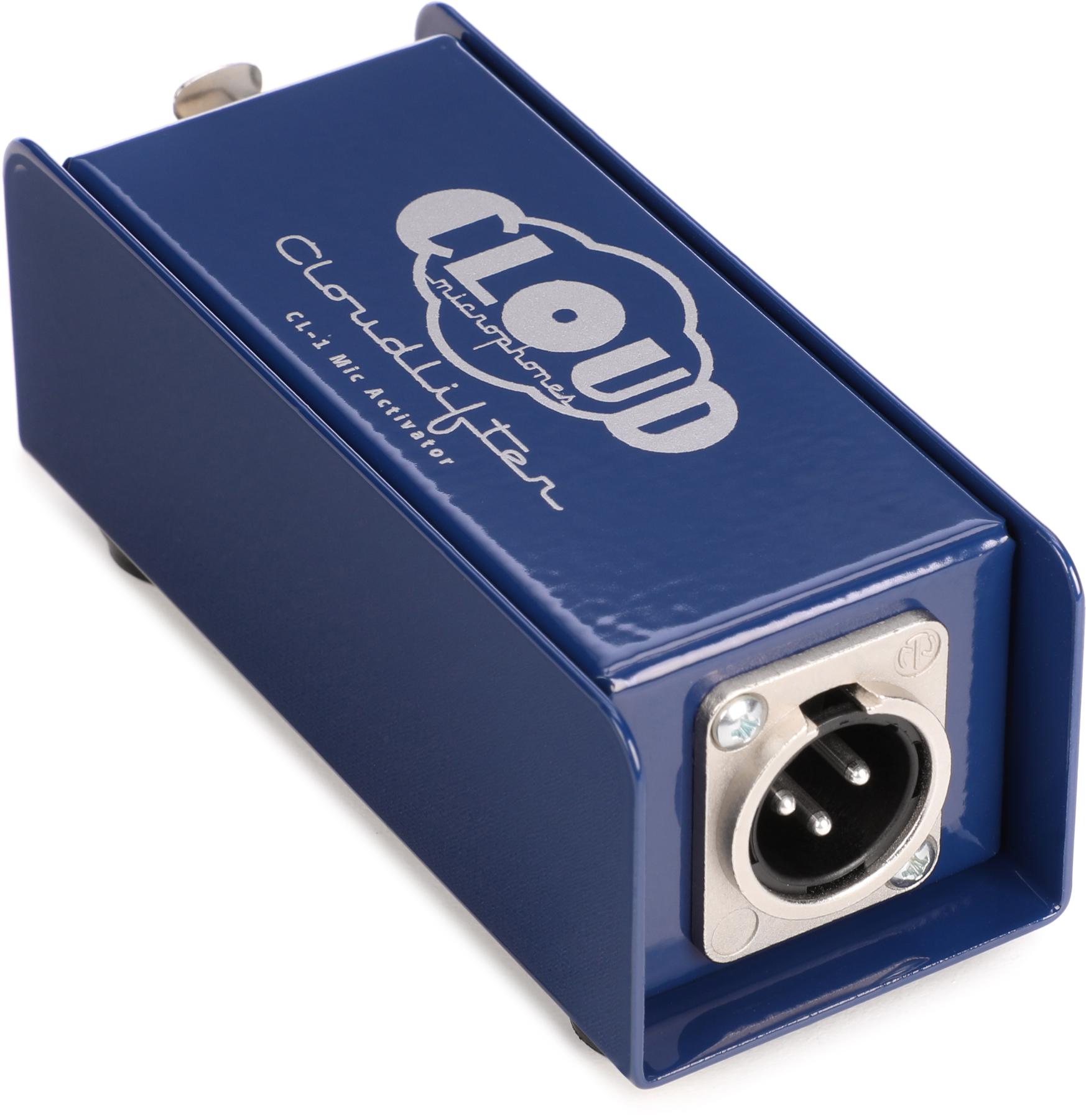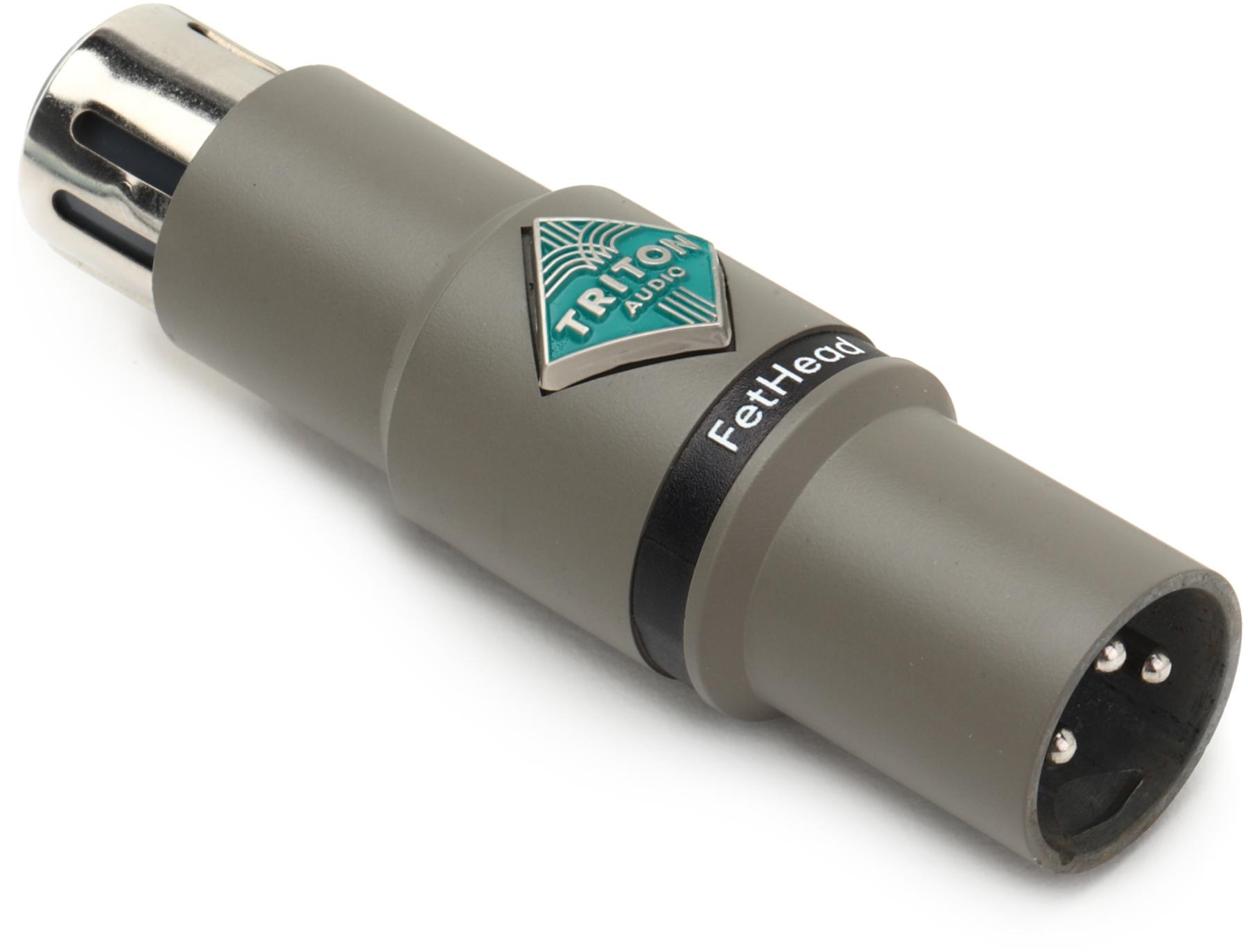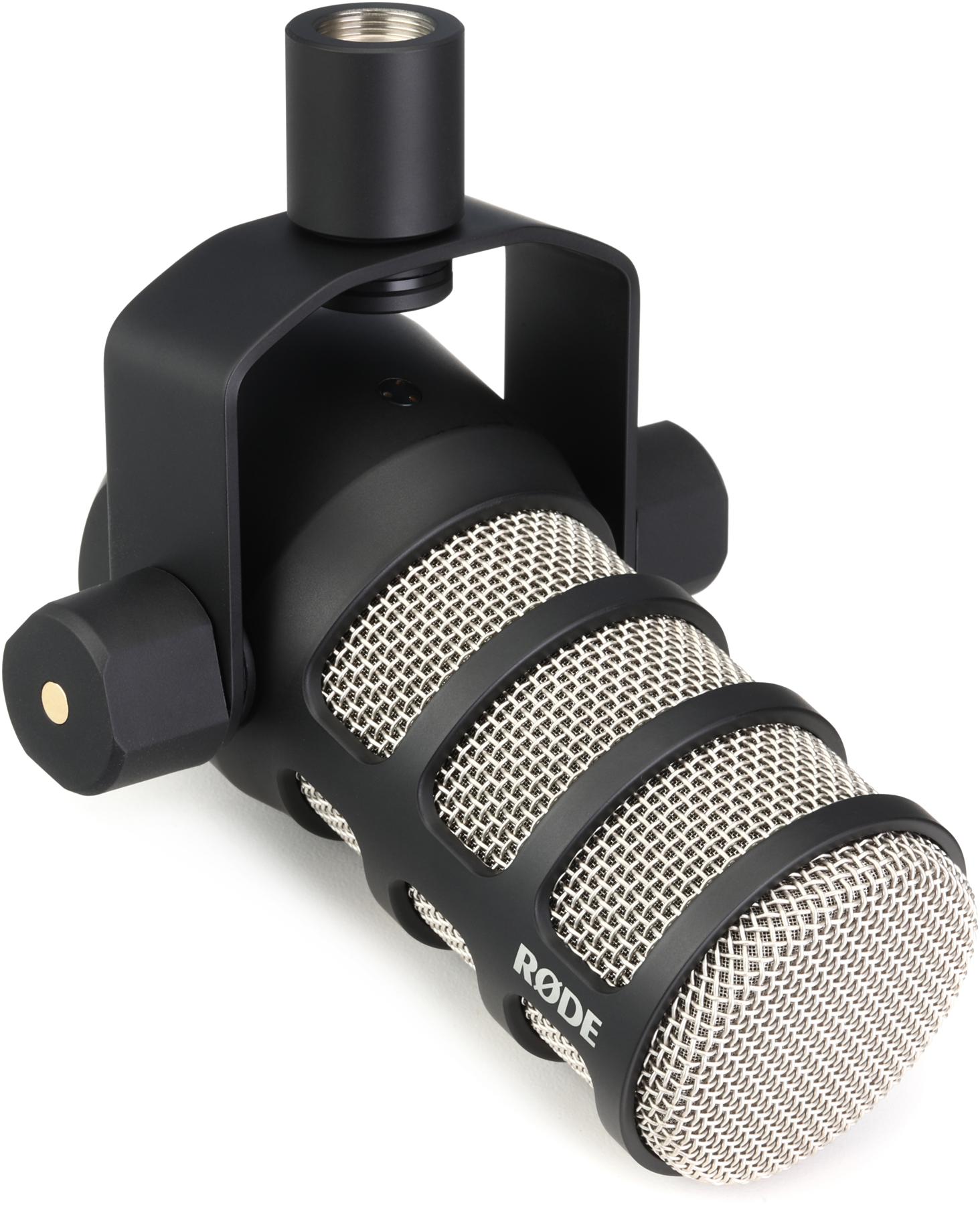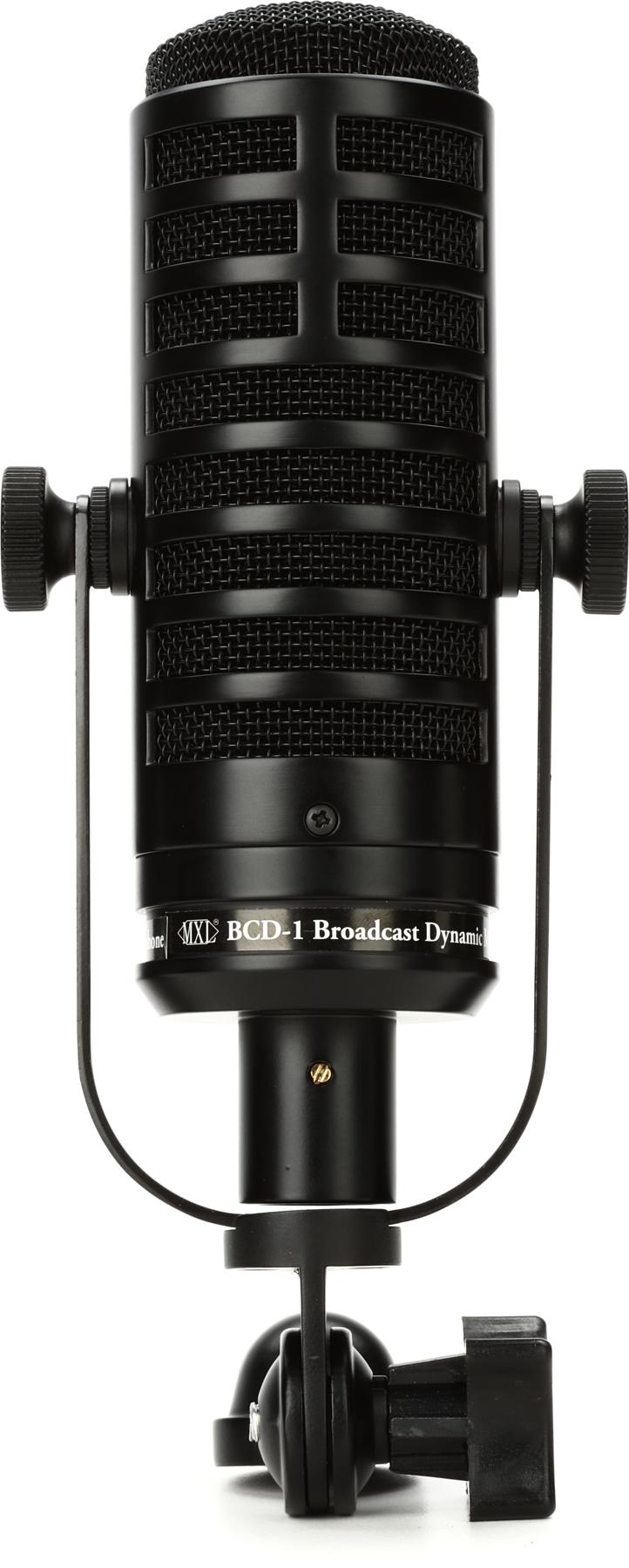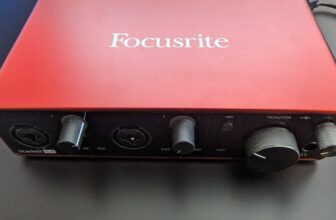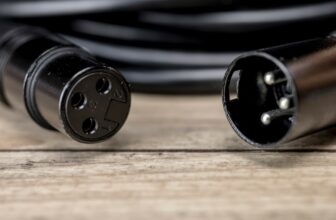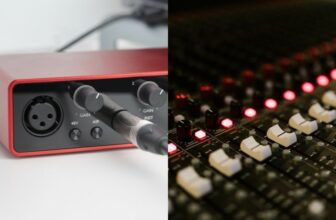The 7 Best Audio Interfaces For Shure SM7B (2024)
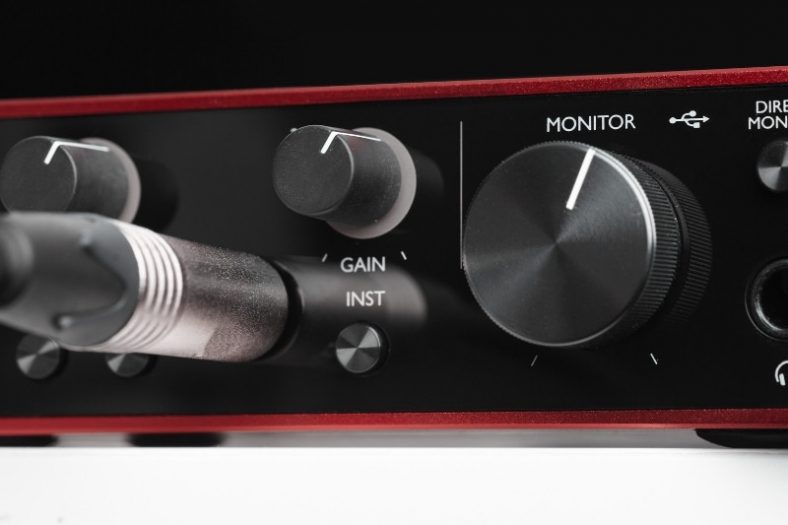
The Shure SM7B is one of the most popular vocal dynamic microphones in the world. This industry-standard mic performs best when combined with a nice audio interface.
In this article, I’ve taken a look at the seven best audio interfaces for Shure SMB7. You should be able to get excellent results with any of the audio interfaces listed below. It helps that the Shure SM7B is a great microphone, used extensively in music recording and broadcasting. It’s also Joe Rogan’s favorite mic.
My top recommendation is the Universal Audio Apollo Twin due to its state-of-the-art preamps and recording software.
My budget recommendation is the Audient iD4 MKII because it provides the best-quality mic preamps in the market within its price range.
Contents
- The 7 Best Audio Interfaces For Shure SM7B (2024)
- 1. Universal Audio Apollo Twin
- 2. Audient iD4 MKII
- 3. Solid State Logic 2
- 4. M-Audio M-Track DUO
- 5. Focusrite Scarlett 2i2
- 6. MOTU M2
- 7. Native Instruments Komplete Audio 2
- Start by considering your needs
- If Sound Quality is what you want, prioritize the Mic Preamps
- Is one Microphone input enough?
- Choose a Machine that was built to last
- Why do you need an Audio Interface for Shure SM7B?
- What to look for in an Audio Interface for Shure SM7B when buying?
- What are some External Preamp options?
- What are Alternatives to the Shure SM7B?
- Verdict
The 7 Best Audio Interfaces For Shure SM7B (2024)
Let’s move on to the full list:
1. Universal Audio Apollo Twin
The Universal Audio Apollo Twin isn’t the most affordable audio interface on the market, but it’s a top-level, one-of-a-kind piece of gear that will satisfy all of your recording needs.
Apollo Twin’s audio quality is standout, and its preamps are widely praised for their warm and vintage-like sound. In other words, it’s the audio interface you need to turn a good-sounding Shure SM7B into a beastly microphone.
Pros
- Excellent audio quality
- Latency-free recording
- CPU-optimized recording console
- Portable and highly resistant
Cons
- No cable is included in the Thunderbolt version
- Pricey
Sound quality isn’t all, though. Apollo Twin’s most precious feature is its recording console software, which provides latency-free recording and CPU optimization on the fly. You can plug Apollo Twin into any computer and still experience a significant upgrade in terms of performance and recording latency.
The quality of the product itself is also worth noting. Despite being incredibly powerful, the Apollo Twin fits any backpack and is made of highly resistant materials. For that reason, it’s perfectly equipped to use while on the road.
| Inputs/outputs | 2 x combo inputs, 4 x outputs, 1 x headphone output |
| Preamps | 2 (with Unison mic preamp modeling technology) |
| Dynamic range | 118dB |
| Phantom power | Switchable +48V |
| Additional features | SHARC DSP computing, Universal Audio’s recording console, and free Universal Audio plug-ins |
With two combo inputs, phantom power, and a 118dB dynamic range, Apollo Twin has everything one could ask from a professional audio interface. Available in USB and Thunderbolt versions, it comes with a decent collection of high-quality Universal Audio plug-ins, including the LA-2A Classic Audio Leveler and the 610-B Tube Preamp.
2. Audient iD4 MKII
It’s no coincidence that the Audient iD4 MKII has been met with great reviews pretty much everywhere. Within its price range, this portable audio interface features the best mic preamps I have ever worked with.
The construction is excellent, the design is sleek, the software is easy to use, and the volume knob is as sweet as it gets. But yes, the preamp is the standout. After all, the iD4 MKII is equipped with the same Class A preamp technology that Audient uses in its high-cost consoles, meaning you have access to top-class sound quality for a super low price.
Pros
- Class A Audient preamp
- Sturdy, all-metal construction
- Incredible dynamic range
- Additional features are great for workflow
Cons
- USB 3.0 is required
- Volume needs to be reset after the reboot
You need a USB 3.0 plug to use it, but that shouldn’t be a problem unless you’re working with a very old computer. Even though the iD4 MKII is bus-powered, it’s great in terms of performance.
Within the price range, monitoring couldn’t be any better. Thanks to its two-headphone outputs and handy mute switch, the iD4 MKII is perfect for working in the studio, especially if you’re recording with other musicians.
| Inputs/outputs | 1 x combo input, 2 x outputs, 1 x 1/4” and 1 x 1/8” headphone output |
| Preamps | 1 (Class A Audient console mic preamp) |
| Dynamic range | 126dB |
| Phantom power | Switchable +48V |
| Additional features | Built-in headphone amplifier and mute switch |
Sure, the iD4 MKII only includes one mic input (most audio interfaces on the market have at least two). However, the featured preamp is so good I refuse to accept this minor limitation as a substantial disadvantage.
While the iD4 MKII doesn’t get anywhere close to the Apollo Twin when it comes to CPU and latency optimization, it doesn’t fall too far behind in terms of sound quality.
3. Solid State Logic 2
When it comes to value for money, the Solid State Logic 2 (SSL2) almost beats Audient iD4 MKII. The quality of the preamps (which is still great considering its price) isn’t quite at the same level, but the SSL2 hits the bullseye in pretty much any other parameter.
If you’re looking for an audio interface for broadcasting, SSL2 is probably the best pick. For a very reasonable price, you get access to everything you need to record and monitor your voice on the go. The useful Legacy 4K enhancement button is perfect if you don’t want to dwell too much into mixing and audio optimization.
Pros
- Perfect for broadcasting
- Amazing software package
- Sound enhancement with the push of a button
- High-quality mic preamps
Cons
- The knobs are somewhat fragile
- Can distort at very high levels
There are some ‘forgettable’ flaws to the SSL2. The construction is pretty good, but the knobs are a bit fragile. It’s probably not the best audio interface to take with you while touring. If you apply too much gain to the mic signal, the audio can distort relatively easily, so you have to pay attention to how loud you speak or sing.
Luckily, the included software package easily makes up for any minor disadvantage. In addition to two high-quality SSL native plugins, you get access to Ableton Live Lite, Komplete Start, and Loopcloud Samples.
| Inputs/outputs | 2 x combo inputs, 2 x outputs, 1 x headphone output |
| Preamps | 2 (with 62dB gain range) |
| Dynamic range | 112dB |
| Phantom power | Switchable +48V |
| Additional features | Software package with 2 SSL native plug-ins, Ableton Live Lite, Komplete Start, and Loopcloud Samples + Legacy 4K enhancement |
The 5-stage level meters, available for each mic input, are also worth noting. While this isn’t a make-it-or-break-it feature, it’s surely helpful to have a visual reference right there to help you keep your vocal levels in check.
4. M-Audio M-Track DUO
So, you need to get an audio interface for your Shure SM7B as soon as possible and you don’t have that much cash in hand? Don’t worry, the M-Audio M-Track DUO has got you covered. I won’t lie: its main advantage is being unbelievably affordable. However, there’s more to this underrated piece of gear than what first meets the eye.
For entry-level music producers, the M-Track DUO is just perfect. You can get it, use it for a while, and upgrade to something better later. If you’re working in radio or broadcasting, the M-Track DUO should be just enough to get you the results you need in the long run.
Pros
- Unrivaled low cost
- Minimum latency monitoring
- Portable and solidly built
- Clip signal viewer
Cons
- Lacks advanced features
- Questionable Windows drivers
- Outdated USB 2.0 connection
The M-Track DUO is one of those devices that gets the work done, but please don’t expect to be wowed. It would be unfair to expect that from such a low-cost model. What you can expect, though, is a straight-to-the-point, well-fabricated, intelligently designed (the knob placement is great), and very low-latency audio interface.
Some previous users have complained about the M-Track DUO’s unreliable Windows drivers, but this shouldn’t be a problem unless you’re working with CPU-heavy projects.
| Inputs/outputs | 2 x combo inputs, 2 x outputs, 1 x headphone output |
| Preamps | 2 (with -128dB input noise) |
| Dynamic range | Undisclosed (+54dB of gain) |
| Phantom power | Switchable +48V |
| Additional features | Software package with MPC Beats and Revalver plug-ins |
With low noise preamp technology, a clip signal viewer per mic input, a line/instrument switch, and up to +54 dB of gain, the M-Track DUO is an interesting choice for beginners or people who just want to give a volume/sound quality boost to their Shure SM7B microphone.
5. Focusrite Scarlett 2i2
The Focusrite Scarlett 2i2 (4th Gen) is arguably the world’s most famous audio interface. It’s not by coincidence. While Focusrite’s marketing team’s been doing a great job, this piece of gear is a standout because it’s right in the middle: you get solid, ultra-low-noise preamps, audio monitoring, fabrication, and usability at a great cost.
The Scarlett 2i2 has been tried and tested by thousands of users and reviewers, and the conclusion tends to be the same: it’s worth buying! While the 3rd gen already changed the game of the audio interface world, the 4th gen comes upgraded and packed with features.
Pros
- Tried and tested, a popular choice
- Clean and ultra-low-noise mic preamps
- Low-latency monitoring
- Available bundle options
Cons
- Lack of a 5-pin MIDI jack
- The Air function seems somewhat useless
The fundamentals are all right there: low latency direct monitoring, superb recording, and two high-quality Scarlett microphone preamps. For the extras, you get access to a nice software package that includes a three-month Avid Pro Tools Artist subscription, Focusrite Control 2, and Ableton Live Lite. If you want to add a second mic to your collection, keep in mind there are some very nice Focusrite bundles out there.
On the downside, there is no 5-pin MIDI socket which is a bit of a letdown, and the Air function could make a more noticeable difference – it’s far more subtle than SSL2’s Legacy 4K enhancement, for instance.
| Inputs/outputs | 2 x XLR, 2 x 1/4″ inputs, 2 x 1/4″ outputs, 1 x 1/4″ headphone output |
| Preamps | 2 x mic, 2 x instrument |
| Dynamic range | 120dB |
| Phantom power | Switchable +48V |
| Additional features | Software package with Focusrite Control 2, Ableton Live Lite, 3-month Avid Pro Tools Artist + Switchable Air function |
There’s nothing bad to say about Scarlett 2i2’s specifications, and the 120dB dynamic range is worth noting. In terms of inputs and outputs, this popular piece of gear gives you access to sufficient ins/outs.
For a slightly superior (but more expensive) alternative, you should consider the Focusrite Clarett series. Check out the side-by-side comparison.
6. MOTU M2
The MOTU M2 is a popular choice for a lot of producers, specifically because it features two premium-grade microphone preamps with 24-bit/192kHz resolution and a low-latency design.
The M2 features two combo XLR inputs and four 1/4″ TRS outputs (including Dual RCA and headphone jack). MIDI functionality is included with an input, output, and USB MIDI connection available. For a modest price tag, you’ll hardly find a better match!
Pros
- Superb audio quality at a fair price
- Ultra-low latency design
- LCD screen with detailed meters
- High-quality mic preamps
- Easy to set up and use
- Included software
Cons
- Low headphone preamp volume
- Non-Thunderbolt
Featuring Sabre32 Ultra DAC technology, the M2 is extremely praised for its sound quality. Not only that but the design is very sleek and portable, while also having a durable exterior that will not break easily. The LCD screen is a really nice touch for low-lighting studio environments where you can clearly see the meters.
That being said, the issues I found with this audio interface are the non-thunderbolt connection, which may be a letdown for many, and the low headphone preamp volume. Apart from that, this interface is extremely efficient!
| Inputs/outputs | 2 x XLR – 1/4″ combo inputs, 2 x 1/4″ TRS, 1 x Dual RCA Stereo, 1 Headphone outputs |
| Preamps | 2 mic preamps |
| Dynamic range | 120dB |
| Phantom power | 2 x Individual +48V |
| Additional features | MIDI Input/Output/USB, USB-C connection, and software included |
If you want audiophile-quality sound from your Shure SM7B, the MOTU M2 is definitely worth considering. With two exceptional preamps, durable and aesthetic design, Loopback function for live streaming/podcasting, and more, you get excellent value for a little money.
7. Native Instruments Komplete Audio 2
As a world-class broadcasting microphone, the Shure SM7B is perfect for doing some reporting away from home. For outdoor audio adventures, the Native Instruments Komplete Audio 2 happens to be the perfect audio interface. It’s a solid machine that offers high-quality sound while also fitting in your pocket.
The perfect audio interface to take with you on the road, the Komplete Audio 2 was designed by the guys at Native Instruments, a company accustomed to creating some of the most beloved virtual instruments, audio effects, and sample libraries in the world.
Pros
- Ultra-portable
- Decent recording quality
- Sleek design
- The included software package is great
Cons
- Delivers, but misses that “wow” factor
- Not the best construction
Coming from a world-class music software company, the Komplete Audio 2 includes one of the most desirable software packages you’ll find on the market. In addition to Ableton Live Lite, you get a few Native Instruments plug-ins that are worth buying, let alone getting for free.
Aside from its sleek design and portability, though, the Komplete Audio 2 lacks that distinctive factor that makes it stand out against the competition. Nonetheless, it’s a small audio interface with a big sound that’s great value for money.
| Inputs/outputs | 2 x combo inputs, 2 x outputs, 1 x headphone output |
| Preamps | 2 (24 bit/192 kHz) |
| Dynamic range | 104dB |
| Phantom power | Switchable +48V |
| Additional features | Software package with Ableton Live Lite and several Native Instruments plug-ins |
Loaded with two industry-standard 24-bit preamps and a dynamic range of 104dB, the Komplete Audio 2 can significantly improve the sound of your Shure SM7B. If you’re planning on getting a trusted audio interface that can be easily taken anywhere, Komplete Audio 2 is the smartest choice you’ll find.
Start by considering your needs
To know what the best audio interface for you is, you must first consider your needs. Assuming your goal is to make the most out of your Shure SM7B, your top priority should be on sound quality. Ask yourself this question: can this audio interface truly make my microphone sound better?
In addition, think about what you’re using your Shure SM7B for. Is it for recording instruments? Then, aspects such as dynamic range should be taken into account, as well as line/instrument switches for mic inputs.
Do you want to record a podcast? Then, you should listen to samples of how a given audio interface works with vocals. Is your setup always at your home studio, or are you on the road? In that case, the size and portability of the audio interface matter significantly.
If Sound Quality is what you want, prioritize the Mic Preamps
Vintage mic preamps with a million-dollar sound cost thousands of dollars. So, it makes sense that there are great mic preamps with a thousand-dollar sound in the market for a couple of hundred dollars.
If optimizing the sound of your Shure SM7B is all you want, the quality of your interface’s preamps should be your number one priority.
It’s not easy to evaluate what constitutes a good mic preamp. However, you can always trust the assessment of more experienced musicians and gear reviewers. Ideally, a high-quality mic preamp should give some brightness and character to a microphone, adding clarity and definition to the sound.
Is one Microphone input enough?
You can’t snub the inputs when getting a new audio interface. Once again, it’s all about what you need. One high-quality mic input is all that’s required to transform the way your Shure SM7B sounds. But if you want to record two or more mics simultaneously, you can’t get a one-input audio interface like the Audient iD4 MKII.
Choose a Machine that was built to last
Last but not least, the quality of the fabrication is extremely important. The best midrange audio interfaces are made with resistant materials, but they’re not all at the same level. If you want your audio interface to last (believe me, I’ve “ruined” many in the past), you should stick to solid hardware and well-protected knobs.
Why do you need an Audio Interface for Shure SM7B?
You need an audio interface for Shure SM7B to convert the microphone’s analog audio signal into a digital audio signal. This way, you can use it to record directly into the computer. Audio interfaces also help to boost the gain and sound quality of the Shure SM7B.
What to look for in an Audio Interface for Shure SM7B when buying?
For improved sound quality, you should review parameters such as the mic preamps, the dynamic range, the low-noise values, and the gain precision. Other than that, you should also factor in the price, additional features, portability, and quality of the materials.
What are some External Preamp options?
You can also make the most of your Shure SM7B by relying on an external preamp. Popular and reliable options include the Cloudlifter CL-1 and the Triton Audio FetHead.
Click here to learn more about how you can use an external preamp to power up your Shure SM7B.
What are Alternatives to the Shure SM7B?
Solid alternatives to the Shure SM7B include high-quality midrange mics such as the Electro-Voice RE320, the Rode PodMic, and the MXL BCD-1.
Verdict
The Shure SM7B is a great microphone for those looking to improve the quality of their recordings. However, to get the most out of it, you’ll need a good audio interface. Look for one with quality preamps, gain precision, and low noise floor values. Additionally, make sure it is made of durable materials and is easy to transport if needed.
My top pick is the Universal Audio Apollo Twin. It’s a professional audio interface that will last you a lifetime.
My budget pick is the Audient iD4 MKII, boasting the best mic preamps you can get for little money.

